Someone ought to write a musical about insects in Texas. Opening number:
The bugs and mites
They sure do bite
clap*clap*clap*clap*
Deep in the heart of Texas…
Thanks to its climate and habitats, Texas is a very insect-friendly state. In fact, it ranks # 3 for hospitality to insect pests, after Florida and California, at least according to one pest removal company. So let’s take a closer look at some notably pesky insects in Texas, as well as a few other aggravating arthropod invertebrates, that reside in the Lone Star State.
#1 Red Imported Fire Ant, Solenopsis invicta
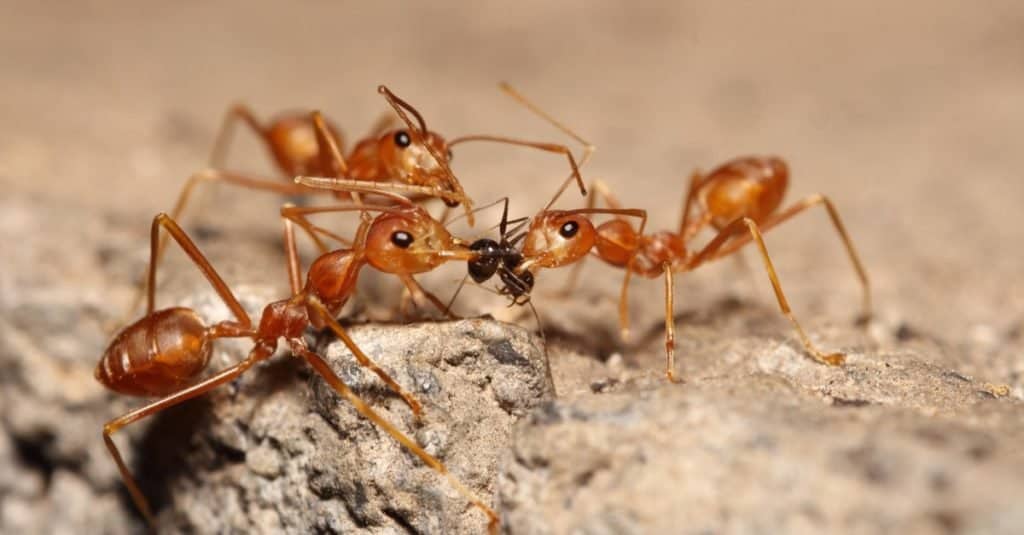
Their painful bite, and displacement of native species, place fire ants among some of the least welcome insects in Texas.
©sarawuth wannasathit/Shutterstock.com
This invasive ant species came to the United States in the 1930s, and have spread throughout the southern U.S. Fire ants first arrived in Texas in the 1950s. If their foot-high nest mounds are disturbed, look out: they’ll swarm any intruder and inflict highly painful, burning stings. Worse, each ant will give you multiple jabs.
#2 Kissing Bug, Triatominae spp.
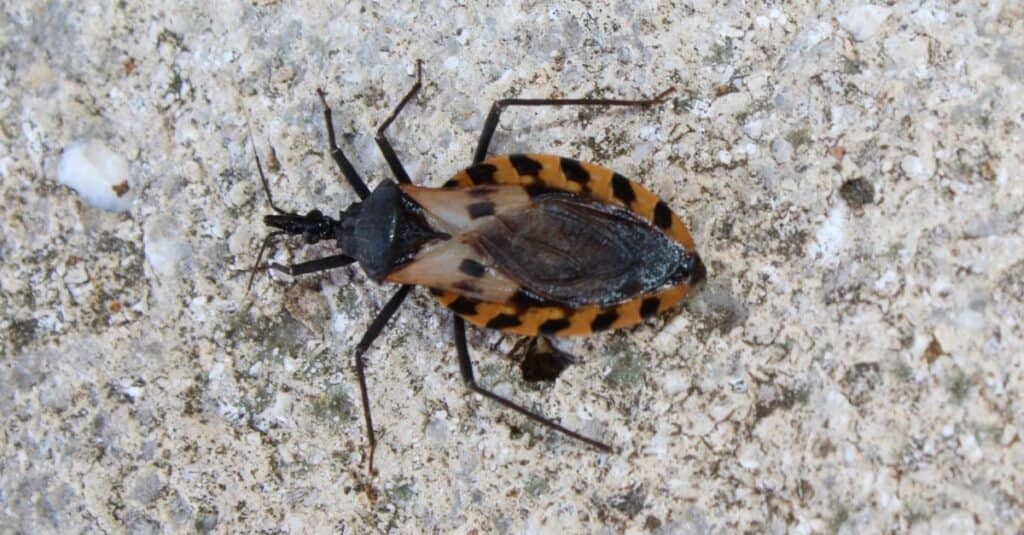
Kissing bugs can carry disease-causing parasites.
©Vanessa Becker-Miller/Shutterstock.com
Don’t be fooled by the name. These bugs don’t kiss you so much as they crawl onto your while you sleep, bite your lips and face, and feed on your blood. The bite itself generally isn’t painful, but kissing bugs can carry a parasite called Trypanosoma cruzi. The parasite causes Chagas disease, which can produce fever, body aches, headache, rash, diarrhea, loss of appetite, or vomiting. Long-term effects include heart problems, making this a particularly dangerous insect in some parts of Texas.
#3 Southern Black Widow Spider, Latrodectus mactans
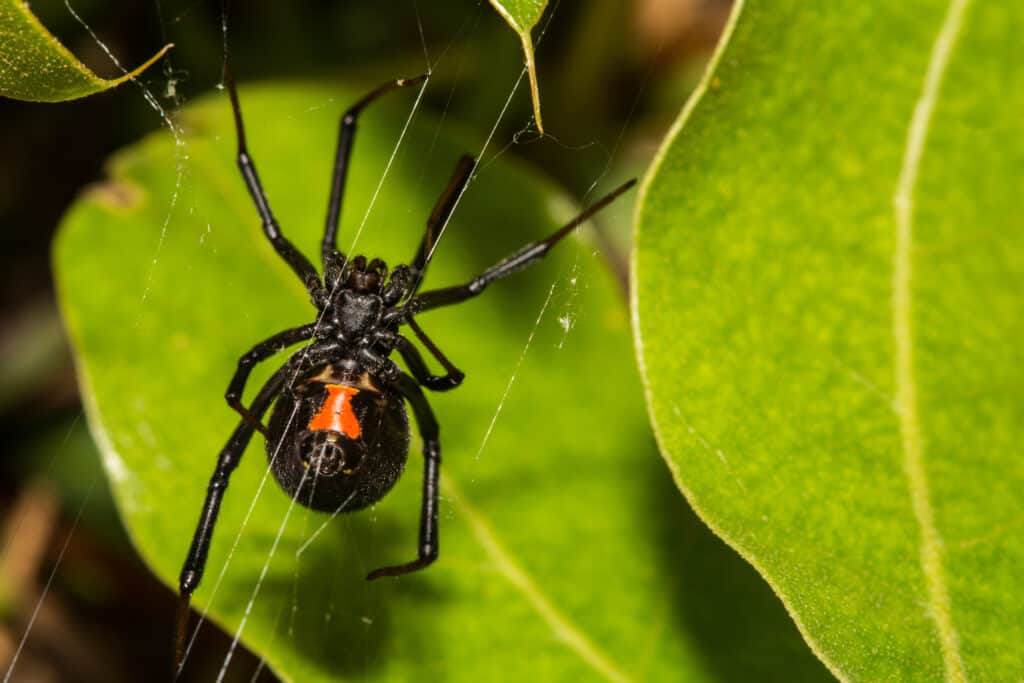
Female black widows usually have a distinct red marking.
©Jay Ondreicka/Shutterstock.com
Not an insect, of course; spiders belong to the arachnid family. But where there are bugs, there will be spiders to eat them. Only the females, which usually have a characteristic red hourglass-shaped mark on their underside, are venomous. But what venom! It’s 15 times stronger than rattlesnake venom and intensely painful. But the bite of a black widow is rarely life-threatening since the spiders release only a small amount of venom. And black widows are not aggressive spiders, they tend to skitter away from you if they can, rather than bite.
#4 Emerald Ash Borer, Agrilus planipennis
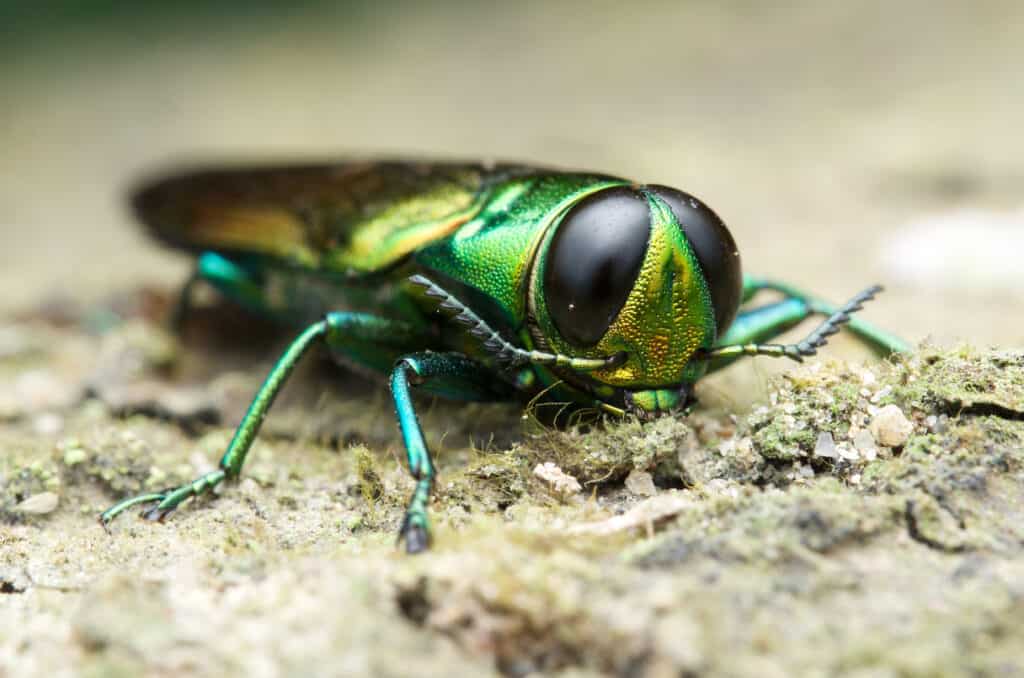
Their destruction of trees makes this beetle a dangerous insect in Texas and other states.
©Herman Wong HM/Shutterstock.com
This beetle is reviled not for biting people, but for chomping on trees. The EAB lays its eggs on ash trees, and the larvae that hatch chew up the tree’s insides and eventually kill the tree. Emerald ash borers are an invasive species that have wiped out millions of trees in 30 states.
#5 Mosquitoes, Culicidae spp.

Mosquitoes love you, or more accurately, your delicious blood.
©iStock.com/panom
Not only do these buzzing bloodsuckers ruin camping trips, backyard cookouts, and many other summertime outdoor activities, some mosquitoes can carry disease. That includes West Nile virus, dengue, and malaria, all of which have been reported in Texas.
# 6 Fleas, Ctenocephalides felis
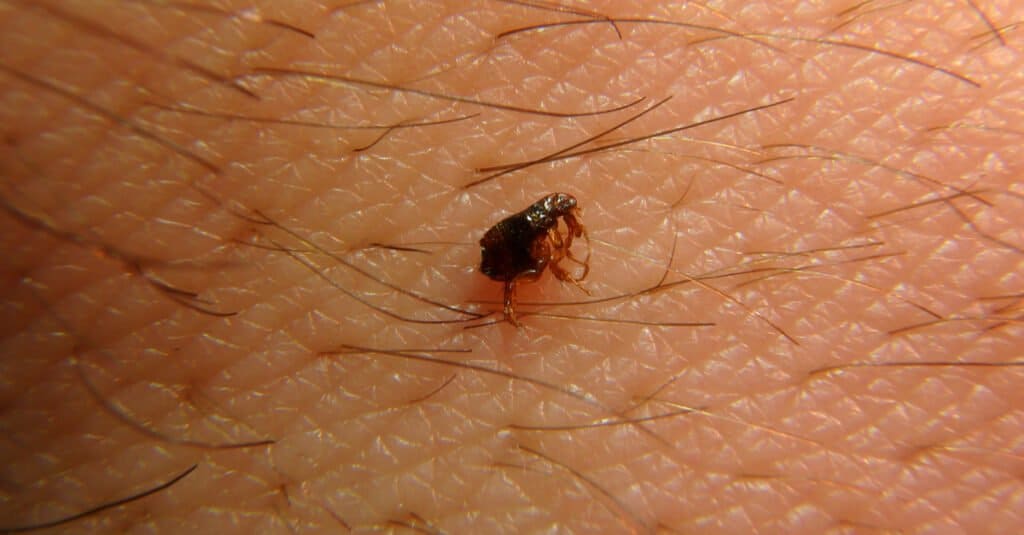
Fleas don’t survive long on humans, but they last long enough to be an annoyance.
©David Jara Bogunya/Shutterstock.com
Controlling fleas is a $9 billion per year industry. In Texas, the most problematic flea is the cat flea, which despite the name can live on dogs, cats, and wildlife like raccoons and possums. They don’t live on humans, but they will bite, causing red, itchy bumps. Some people have an allergic reaction to flea bites.
# 7 Bald-Faced Hornets, Dolichovespula maculate

Bald-faced hornets make their nests in the trees of Texas.
©Manu M Nair/Shutterstock.com
These wasps, recognizable by the white marking on their face and dark brown wings, build papery, hive-like nests in elevated spots like tree branches or building eaves. They’ll aggressively attack anyone who comes near their nest, and inflict painful, envenomed stings.
# 8 Southern Yellowjackets, Vespula squamosa
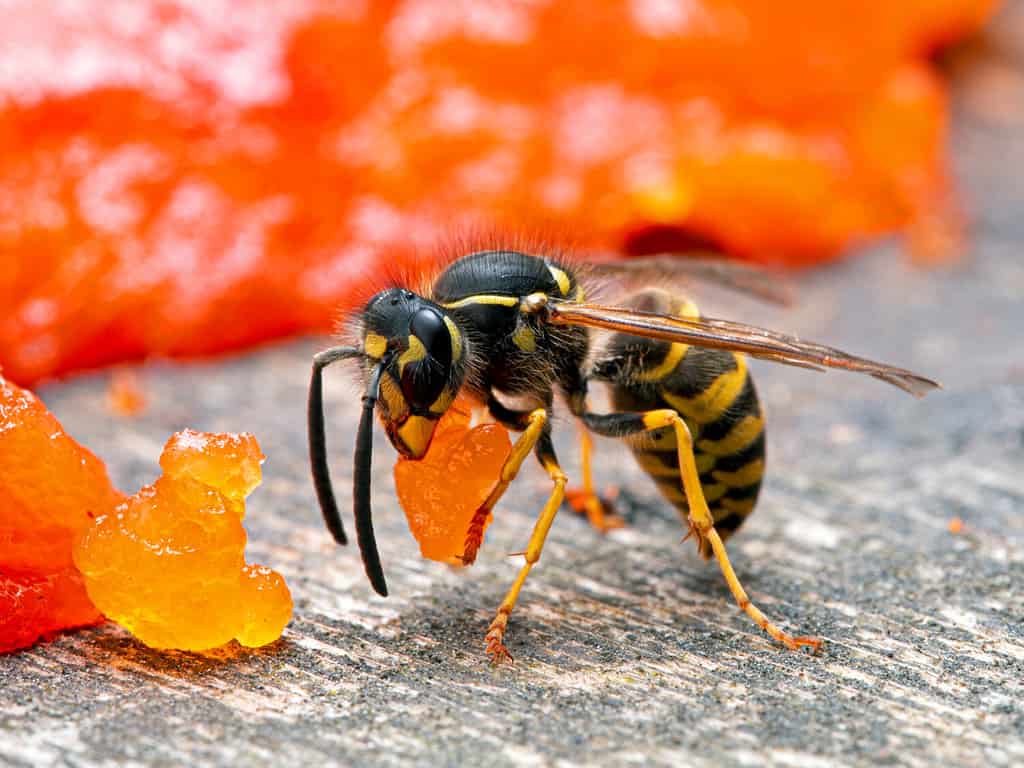
Yellowjackets like to feast on human food, making them a picnic nuisance.
©Ernie Cooper/Shutterstock.com
Found in Texas, and to the east and south, these wasps usually make their nests in the ground, but can also build them in tree cavities and spaces within walls. Unlike bald-faced hornets, southern yellowjackets are attracted to human food and will forage around trash cans or wherever food is left out in the open. The bigger danger, though, the more aggressive the defense of their nest should it be disturbed. The insects become increasingly aggressive in late summer as their numbers increase.
# 9 Texas Asp, Megalopyge opercularis
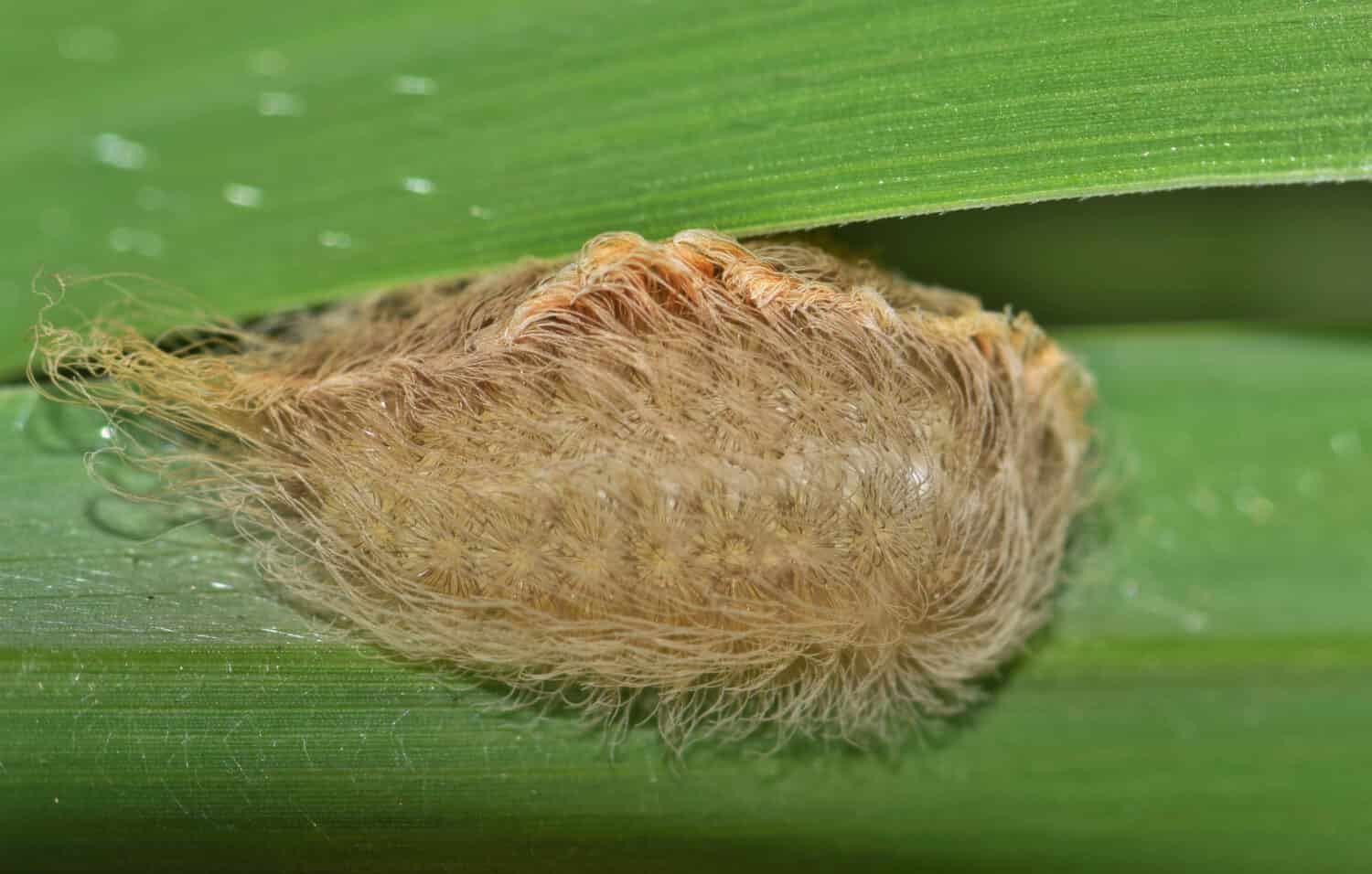
Of all the insects in Texas, this
caterpillar
may be the most deceptive.
©Brett Hondow/Shutterstock.com
Also called the puss caterpillar, this is the larval stage of the flannel moth. One of the odder-looking insects in Texas, it may also be one of nature’s cruelest pranks. When you spot the teardrop-shaped creature inching along a leaf or branch, its long, silky hairs practically beg you to stroke them. But what seems to be a soft and furry animal is actually equipped with venomous spines. Touch it and you’re rewarded with a severe, burning rash, throbbing pain, blood-colored spots on the skin, and sometimes headaches, nausea, vomiting, shock, or respiratory stress.
# 10 Ticks, various species
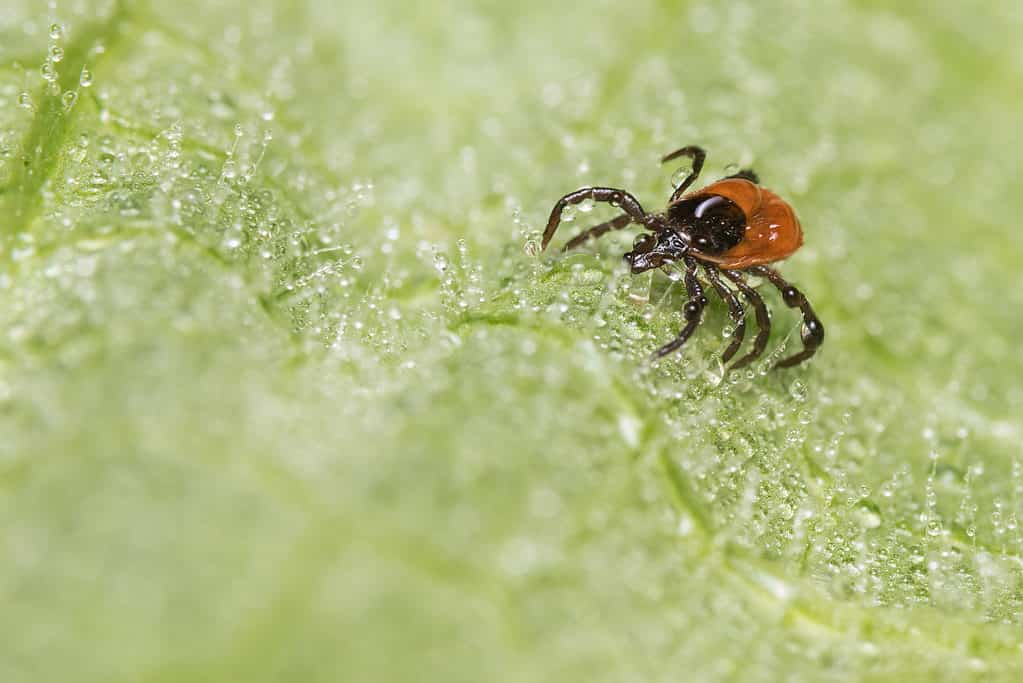
Ticks lay in wait on vegetation, then latch onto passing animals (or people).
©iStock.com/Ladislav Kubeš
The Lone Star State is home to 11 species of ticks, with the black-legged tick, brown dog tick, Lone Star tick, Gulf Coast tick and American dog tick being the ones people are most likely to come in contact with. They all feed on people and other mammals, and can transmit diseases like Rocky Mountain spotted fever, tick-borne relapsing fever, and tularemia. Lyme Disease, carried by the deer tick, is uncommon in Texas.
# 11 Africanized honey bees, Apis mellifera scutellate
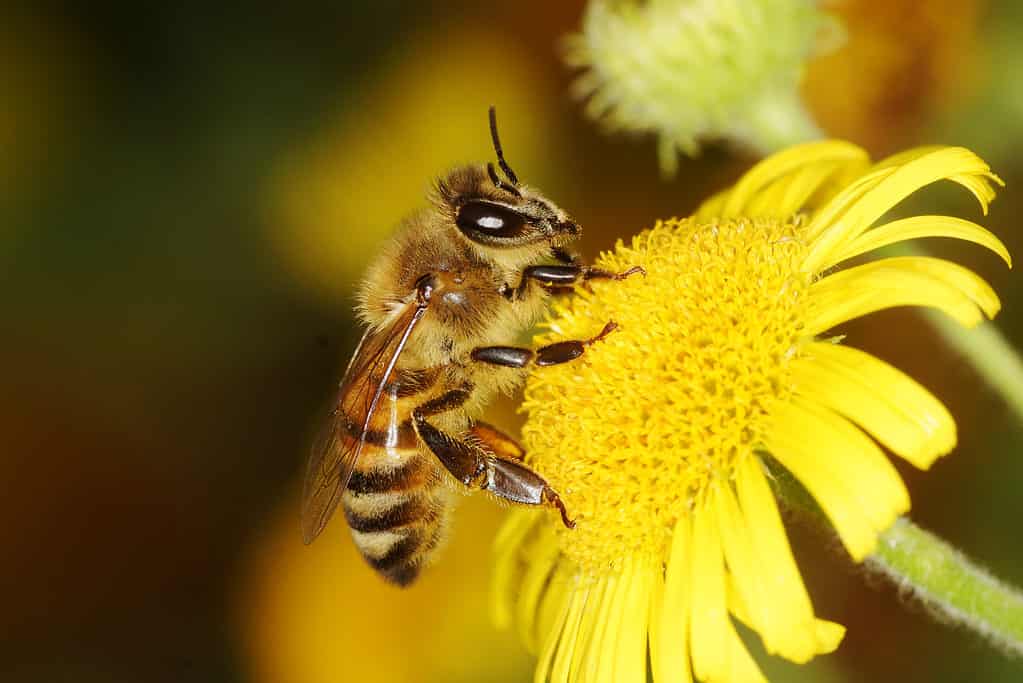
Africanized honey bees look the same as common honey bees, so keep your distance.
©Maciej Olszewski/Shutterstock.com
This hybrid of the common honey bee first appeared in the United States in the 1950s, when bees from southern Africa bred with the European honey bee. They’re identical in appearance to the honey bee. But some varieties are much more aggressive than your average bee and can be provoked by coming too close to their hive. Vibrations from a lawn mower or other lawn equipment can set them off.
# 12 Chiggers, Eutrombicula spp.
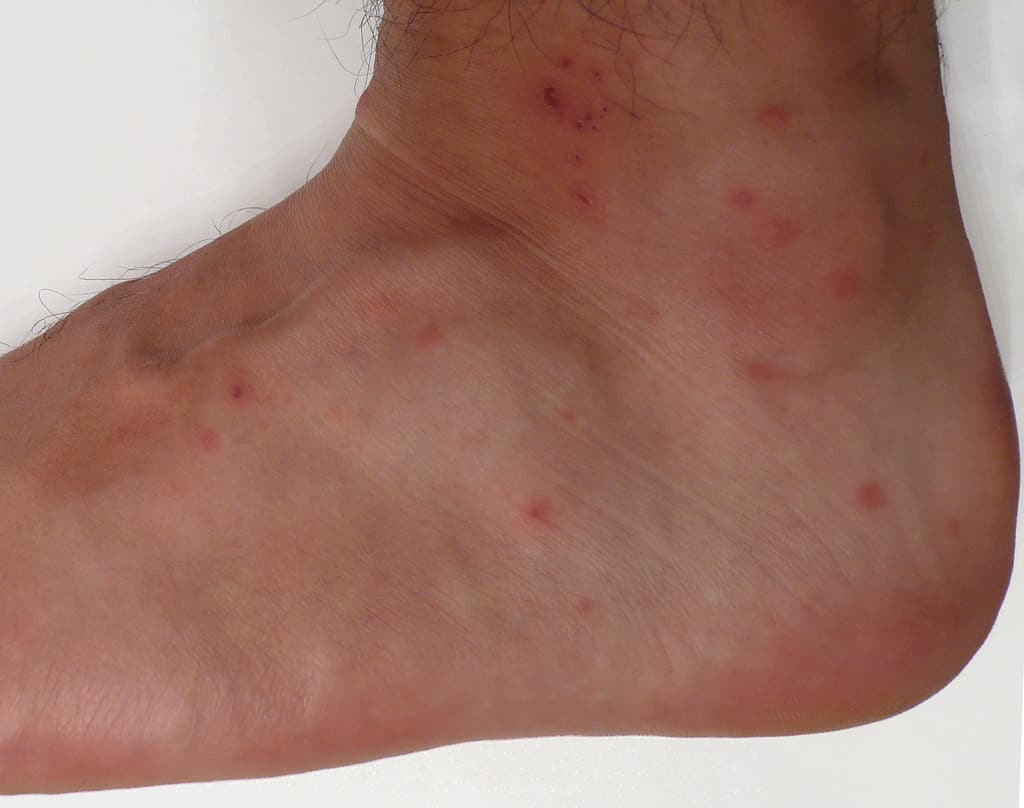
Multiple itchy bites are a calling card of the chigger, a tiny mite that’s a big nuisance.
©TimVickers, Public domain, via Wikimedia Commons – License
Immature stages of certain mite species, chiggers are too tiny to see, practically invisible compared to other Texas insects. But you’ll definitely feel them as they bite into your flesh and feed on your skin cells. The result is an itchy red rash that lasts for a day or two, or sometimes for a week or more.
# 13 Texas red-headed centipede, Scolopendra heros

Try not to scream, it’s only a foot-long
centipede
with venomous stingers, NBD.
©Creeping Things/Shutterstock.com
How about a monster non-insect invertebrate that can grow to be a foot long? With a red head, black body, and multiple yellow legs? Yikes! This centipede has a venomous sting that produces pain and swelling that might be over quickly, or last for hours. Nausea and headaches can also result, though those symptoms are less common.
# 14 Red velvet ant, Dasymutilla occidentalis

Looks like an ant, actually a wasp, stings like a …
©Tarsal Claw/Shutterstock.com
Though they look like red-and-black furred ants, these insects are actually wasps. The female velvet ants, which are wingless, pack a powerful sting. In fact, it’s so painful that this critter is nicknamed the “cow killer ant.” It’s not likely that the sting could actually take out a cow, but who wants to find out? Before stinging, RVAs will give a squeaking warning sound to get you to back off. You should probably heed it.
# 15 Brown recluse spider, Loxosceles reclusa
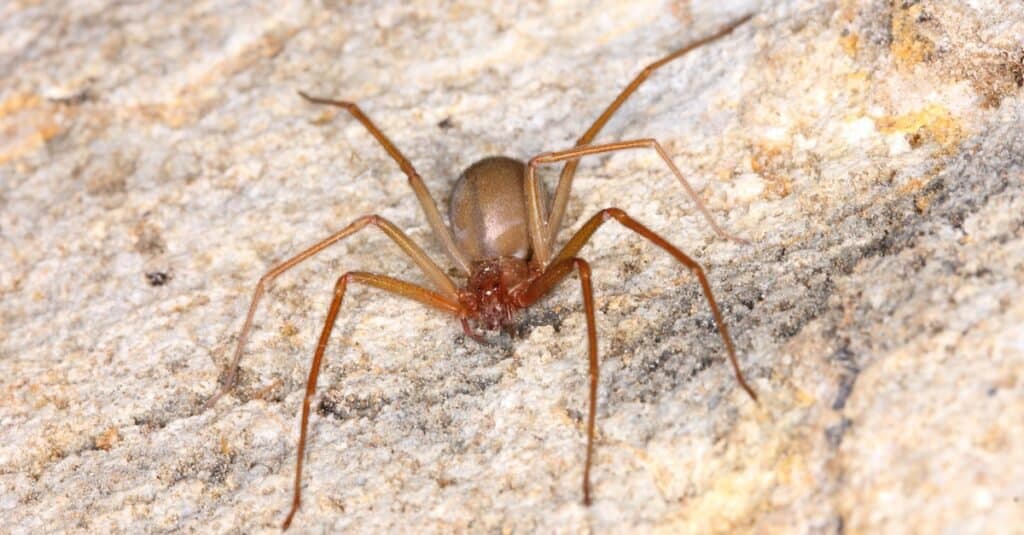
True to its name, the brown recluse hides out in dark, warm spaces, and would rather you leave it alone.
©Pong Wira/Shutterstock.com
Small and shy, these arachnids hang out in warm, dry places like closets and barns. They’re not aggressive, and most brown recluse bites seem to occur when someone unknowingly presses against them. Their venom is potent and can trigger painful skin lesions and systemic illness. But most of the time the bite produces no significant ill effects.
# 16 Crazy ants, Nylanderia fulva
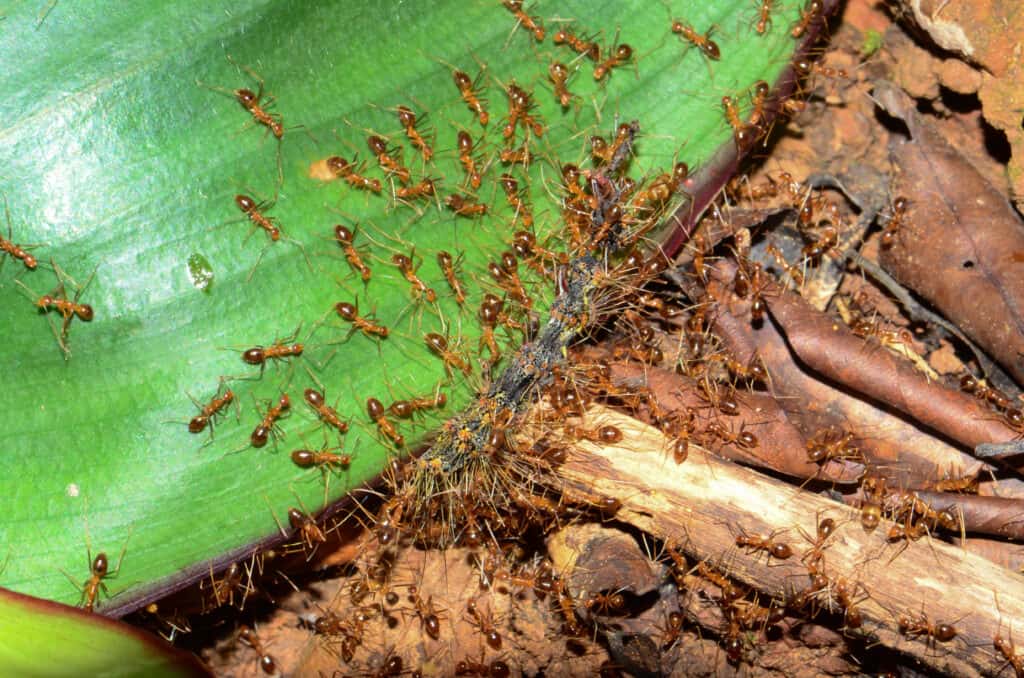
Crazy ants be crazy.
©demonhero69/Shutterstock.com
An invasive species from South America, crazy ants don’t bite, unlike some other insects in Texas we could name (looking at you, fire ant). But they will crawl all over you, so…eww. They swarm in huge numbers over everything from pipes to fuse boxes to car engines in their search for nesting cavities. They short-circuit electronics and displace native ants, which reduces biodiversity and threatens the survival of birds and other animals. Researchers have recently discovered a fungal pathogen which may help bring crazy ant colonies under control.
# 17 Yellow flies, Diachlorus ferrugatus
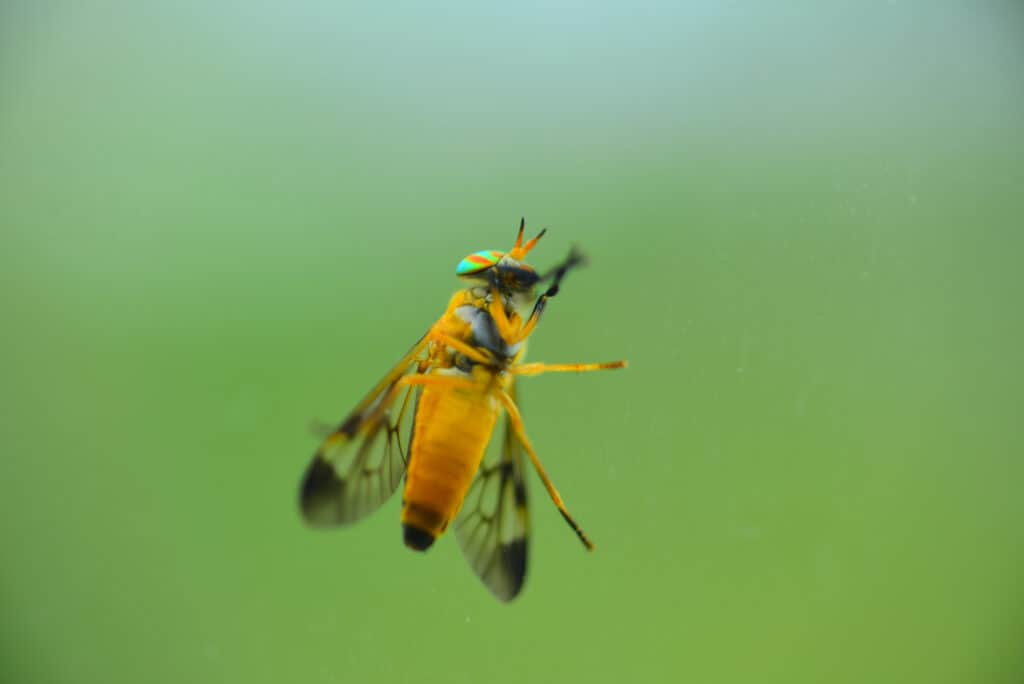
Yellow flies are fierce bitters, leaving behind an itchy and burning sensation.
©iStock.com/cturtletrax
A fiercely biting fly found in Texas and throughout the southeastern U.S., the yellow fly has a painful bite that causes large, itchy swelling. They’re most active in late afternoon and on cloudy days. Because they fly quietly, you might not notice it’s there until you get bitten.
# 18 Black flies, Simulium meridionale
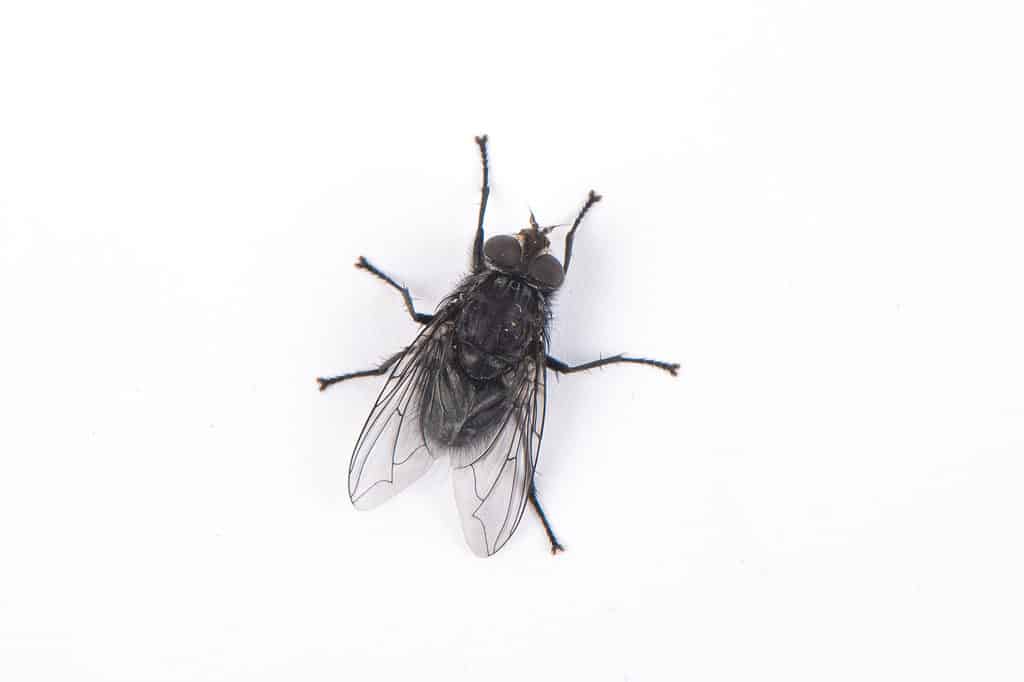
A single black fly is a pest, but a whole swarm can be a bigger problem.
©iStock.com/zhikun sun
Tiny gnat-like flies that are active in spring and summer, black flies are active in spring and summer. They feed on blood from people and animals, and because they swarm in large numbers they can be a health threat to livestock. Black flies will attack any exposed skin. Some people don’t experience much of a reaction from black fly bites, while others develop skin irritation and swelling.
# 19 Horseflies, various species.
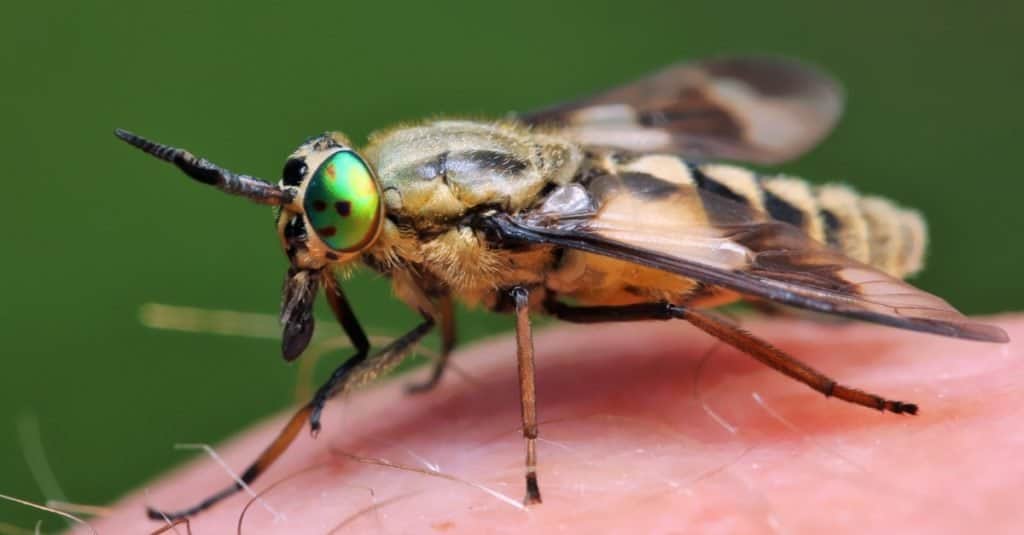
The
horsefly
isn’t picky, they’ll bite people and other non-horse animals.
©Achkin/Shutterstock.com
More than a hundred species of horse and deer flies live in Texas. In many species of these large flies, the female feeds on blood from humans and animals. The bites are painful and can remain swollen for days. In livestock, bites can transmit disease or affect the animal’s growth.
# 20 Red harvester ants, Pogonomyrmex barbatus

Harvester ants tend not to sting, but when the do, you’ll know it.
©Kessler Bowman/Shutterstock.com
One of the larger ants in the Lone Star State, the red harvester is in decline thanks to the fire ant, which out-competes it for resources. They’re not very aggressive, but when they do sting, the result is very painful. In fact, their sting is rated 3 out of 4 on a scale of insect sting pain.
The photo featured at the top of this post is © wnarong/Shutterstock.com
Thank you for reading! Have some feedback for us? Contact the AZ Animals editorial team.






